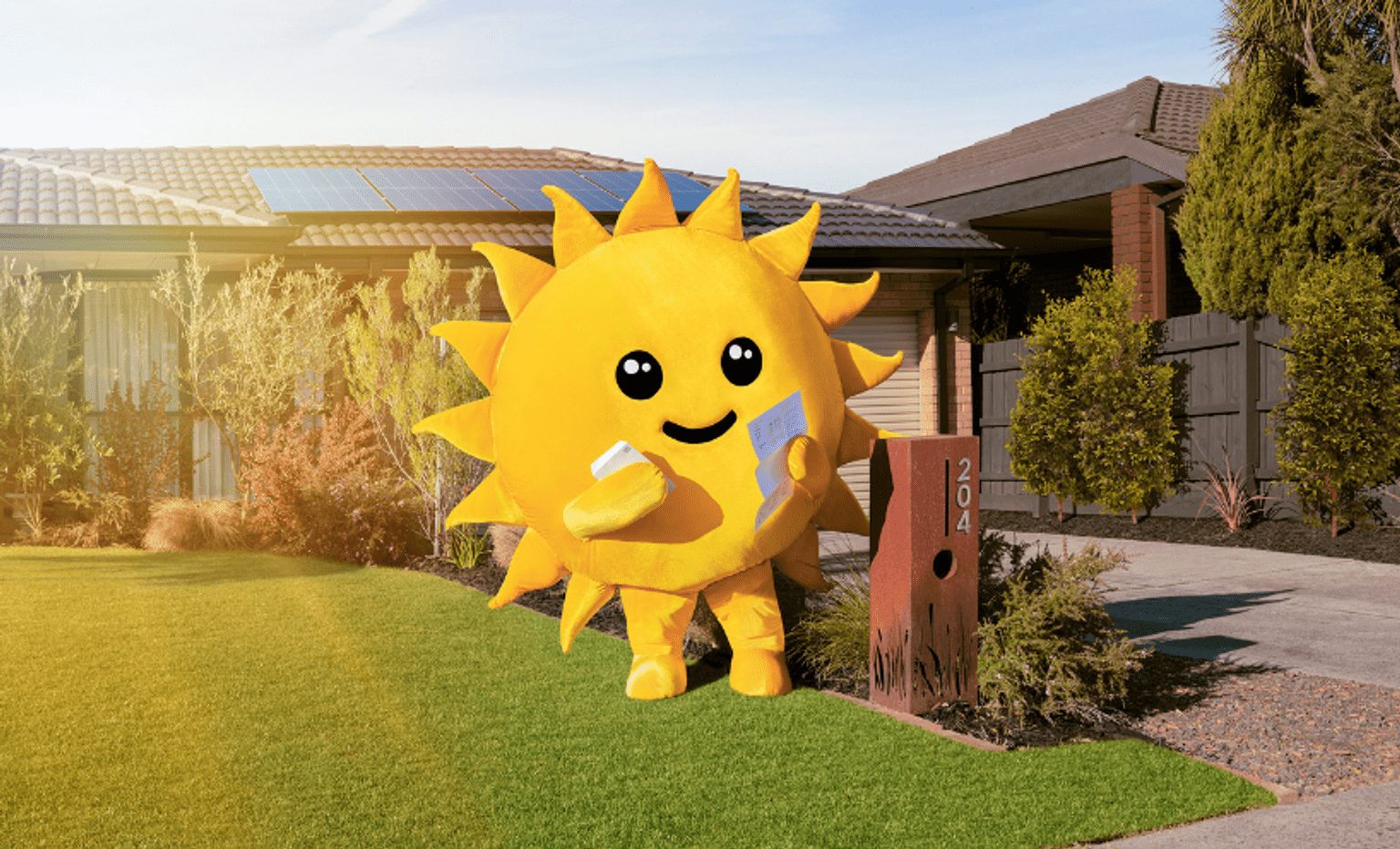- Date:
- 25 May 2021
Welcome
The Solar for Business program has closed. Rebates and interest-free loans are no longer available under this program.
Installing a renewable energy system to help reduce energy bills and greenhouse gas emissions is more popular than ever in Victoria, with significant rebates available to help you save even more. Rebates are now available for solar panel (PV) systems for businesses.
To get the most out of your system it needs to be planned and installed properly. A well-designed system can help lower your energy bills as much as possible, helping you to get the most benefit out of the system. Choosing quality parts and components, and a reputable retailer and installer, will ensure you have a system that serves your business for many years to come.
The Solar Panel (PV) Buyers Guides has been produced in conjunction with non-profit organisation Renew(opens in a new window) to help you plan the right system for your needs.
This Buyers Guide includes the types of solar panel (PV) systems available and factors to consider when making a purchase.
Read the guide, do your homework and seek out independent advice before contacting retailers for quotes. When you’re confident that you’ve found the right retailer and product for you, you can use their quote to begin applying for eligibility for a rebate.
Section 1: Why install a solar electricity system on your business?
By the end of 2020 there were more than 2.66 million Australian homes and businesses with solar rooftops.
By the end of 2020 there were more than 2.66 million Australian homes and businesses with solar rooftops. Victoria accounts for 18.5 per cent of Australia’s installed rooftop solar.
Installing solar has financial benefits
Many businesses want to know if their bill savings will be big enough to justify a solar electricity system.
The clearest answer to this can be found by working out the payback time of a proposed system, which is how long it takes for electricity bill savings to cover the installed system cost, and the annual bill saving, which shows the ongoing financial benefit after the payback period has been reached.
DEECA have a Solar Calculator on the Victorian Energy Compare website.
Today’s grid-connected systems should pay for themselves between seven and nine years in Victoria even without the solar panel rebate, depending on factors such as location, energy retail tariffs and a business’s electricity consumption patterns.
Quality solar panels last at least 25 years, so that initial investment should repay several times over compared with the cost of buying electricity from the grid.
Each system installed helps the environment
Many people are focused on the environmental benefits when choosing to install a solar system. Although solar systems still have an environmental impact through the resources required to produce them, such as lithium used in batteries, they create far less of an environmental impact than electricity generated by fossil fuels.
They also do not create any greenhouse gases when generating or storing electricity, helping businesses to reduce their greenhouse gas emissions and their impact on climate change. As a bonus, any solar generation that isn’t used is sent back to the electricity grid and ultimately used by other consumers, reducing their environmental impact, too.
Solar PV checklist: What to consider before buying a system
- Confirm that your system can be connected to the grid
- Learn about solar panel types
- Find out why you need a good inverter
- Do you want a battery system one day?
- Work out how much energy you use
- Think about system size
- Seek out a reputable installer
- Double check any quotation
- Get a good warranty
Section 2: What rebates and incentives are available to Victorian businesses for solar electricity systems?
Your new system is also eligible for Small-scale Technology Certificates (STCs).
Small-scale Technology Certificates (STCs)
Your new system is also eligible for Small-scale Technology Certificates (STCs). This is effectively a payment made to purchasers of small renewable energy systems for the value of the emissions reduction they create. The quoted price of the system from your installer will have the STC discount included in the final price.
Selling your surplus electricity with Feed-in Tariffs (FiTs)
Any excess electricity generated throughout the day can be sold to the grid through your electricity retailer for a feed-in tariff, which is a fixed rate paid to solar users per kilowatt-hour (kWh) of electricity exported to the grid. Feed-in tariffs vary across states and territories, between retailers, and in some states, even across distribution networks.
Not everyone will be able to feed excess energy into the grid and your local distribution network service provider should inform you if this is the case.
Businesses should consider the tax implications of any revenue received from feed-in tariffs.
It’s a good idea to investigate whether you will be able to feed excess energy into the grid before buying a system. Your solar retailer should discuss any constraints on exporting energy into the grid with you as part of the quote process.
Victoria has minimum tariffs set every financial year by the Essential Services Commission, and electricity retailers must pay these or higher rates. Find out more about Victoria’s feed-in tariffs at the Essential Services Commission website(opens in a new window).
Compare offers from retailers at Victoria’s Energy Compare website(opens in a new window).
Section 3: Grid-connected solar explained
Find out how your new solar electricity system will help your property interact with the electricity grid, drawing electricity when needed and feeding any surplus back into the grid.
How does grid-connected solar work?
Most solar customers choose a mains grid-connected system for the reliability that such a system offers. Your business can draw electricity from the grid when insufficient electricity is being generated by the solar panels.
Any electricity produced by the solar electricity system but not needed by your business at the time it is produced is simply fed into the mains grid, with a feed-in tariff paid to the system owner.
Check with your energy distributor that your premise will be able to feed excess energy into the grid. Grid-connected systems have two main components, the solar panel array on the roof, and a grid-interactive inverter, connecting into your switchboard and electricity meter.
Grid Connection
Approval for grid connection from your Distribution Network Service Provider (DNSP).
The DNSP is the business that owns and operates the electricity network – poles and wires – in your area. They are responsible for the physical connection of your system, and business, to the electricity grid.
The process and technical details for grid connection will vary depending on your specific electricity distributor. Find your electricity distributor on the Electricity Distributor section of Victoria’s Energy website(opens in a new window).
Pre-approval for grid connection
Before you proceed with installing your solar system, you may be required to get pre-approval for grid connection from your Distributor.
Pre-approval ensures that your system will be able to be grid connected once it is installed.
Not everyone will be able to feed excess energy into the grid and your distributor should inform you if this is the case. Your solar retailer should discuss any constraints on exporting energy into the grid with you as part of the quote process.
System size and grid connection
For most small systems (up to 5kW) and in most locations, the process of grid connection is streamlined.
Your distributor will advise you of your ‘export limit’; which dictates how much excess solar generation you can feed back into the grid for a feed-in-tariff. These limits should be considered when selecting the size of your system. For systems larger than 5kW, you may be subject to a negotiation process with your distributor for grid connection.
Speak to both your distributor and solar installer first and find out as much information as you can with regards to likely timeframes, information requirements and costs. You may need to engage an energy professional to assist you to negotiate the grid connection process.
Solar Savvy Tip: You should check you eligibility to export with your distributor before you install.
System components: panels + inverter
Metering
Grid connection requires an electricity meter that allows recording of bi-directional electricity flow to measure energy going to and coming from the grid. Most Victorian Businesses have Smart Meters, which can do this already. But if your business premise is one of the small number of Victorian locations without a Smart Meter, you will need to upgrade.
Speak to your distributor about the process for this, and whether there will be any cost.
What about batteries?
One way of maximising solar electricity is to store it in a battery for use when you need it, rather than when it is generated.
Battery systems have been around for a long time but have been complex and generally too expensive to consider with grid-connect solar PV systems.
That is changing with the introduction of simpler modular battery systems, which means that you can start with just one battery unit and add more if and when needed.
When buying a solar panel system you should consider whether you want to ensure that it is also battery-capable if you want to upgrade.
Solar Savvy Tip: We recommend talking to your installer about systems that are battery capable. This means that you will be able to add a battery to your system in the future.
Section 4: Finding the right solar panels for your system
There are no moving parts to wear out in solar panels, just solid-state cells that have very long lifespans. Each cell type and panel have some advantages and disadvantages, though.
Types of solar panels
There are three common types of solar cell:
- monocrystalline
- polycrystalline; and
- thin film.
They are made in different ways and have different performance qualities. If you’re interested in the detail of their different manufacture techniques, performance characteristics, and the pros and cons of each, find out more in Renew magazine’s Solar System Buyers Guide.
Otherwise, the important thing to know is that regardless of the panel type, the specifications of solar panels show their capacity, price, expected lifespan and other performance characteristics that determine what their energy output will be. These specifications are discussed here.
A larger wattage system will generate more energy in the same installation. However, actual energy generation will depend on many factors, such as sunlight hours, cloud cover, temperature, shading, and panel orientation.
Why is panel wattage and size important?
When buying a solar panel system the main specification to be familiar with is the system size in watts. For example, a 3kW system may be made up of twelve 250 watt panels. This watt specification is known as the rated peak power, which is the maximum power generated by the panel under the manufacturer’s test conditions. But what does panel wattage mean for energy generation?
A larger wattage system will generate more energy in the same installation, but actual energy generation will depend on many factors, such as sunlight hours, clouds, temperature, shading and panel orientation. As a rough rule of thumb, find out the average peak sun hours per day in a particular location to get the average energy generation over a year. For example, a 4kW system in Melbourne with average peak sun hours of around 4.6 should theoretically generate around 14.5 kWh of electricity per day, on average, over a year—more on sunny days and less on cloudy days; more in summer and less in winter.
For example, it’s common for solar systems in Victoria to generate more than twice as much in December as July.
Some solar panel manufacturers and retailers have solar output calculators on their websites to help you work out how much energy a proposed system might generate.
Advice on panel quality and selection
Quality counts at the cell level but the overall manufacturing of panels is also crucial. If assembly systems are substandard, some issues can arise that may shorten the life of solar panels or cause increased degradation over time.
One such issue with crystalline cells is that of microcracks—tiny cracks in the cells that can enlarge over time with thermal cycling (as the panels heat up and cool down each day) or with poor handling practices.
Microcracks have the potential to reduce the current generating capacity of any cells affected, and hence the overall output capacity of the panel.
How can you really tell which panels have been manufactured to the highest standards?
Some solar businesses may refer the ‘tier system’. For example, they may say that their panels are Tier 1, 2 or 3. The tier system relates to the reputation of the manufacturer and solar industry analysts assign panel manufacturers into one of three groups, with the big long-standing manufacturers with a good reputation for quality and performance in Tier 1, and smaller, newer manufacturers in Tiers 2 and 3.
Solar Savvy Tip: If you have limited roof space, higher efficiency panels will allow you to fit more generation capacity compared to lower efficiency panels.
The Clean Energy Council maintains a list of all solar modules (panels) and inverters that meet Australian Standards for use in the design and installation of solar PV systems. This is a more reliable indicator of good quality panels.
To be eligible for rebates, including the Solar for Business rebate, panels sold in Australia must have Clean Energy Council approval, demonstrating that they have been tested and meet Australian and international standards.
Section 5: Finding the right inverter for your system
Choosing an inverter may not be the first thing that comes to mind when you’re thinking about installing a solar or solar plus a battery system.
But every one of the two million solar systems already installed in Australia includes at least one inverter, which can be thought of as the heart of the system—if it’s not working, your solar generation is wasted.
In a nutshell, an inverter takes electricity from a power source that produces ‘DC’ electricity, such as solar panels or a battery system, and converts it into mains-equivalent 230 volt ‘AC’ electricity ready for use in your house.
AC (alternating current) and DC (direct current) are two different forms of electricity. Mains electricity is AC and PowerPoints and light fittings utilise AC electricity, but many small appliances convert it to DC before using it.
Why you need a good inverter
It is important to have a good inverter. In grid-connect systems, an inverter failure means your solar panels are doing nothing until the inverter is repaired or replaced. Still, it’s worth remembering that even the best inverter is unlikely to last as long as the rest of your system. Solar panels should last more than 25 years, but inverters are not generally expected to last much more than 10 or 15 years. You can expect to replace your inverter at least once over the life of your solar PV system.
Which inverter for your needs?
1. Grid-interactive inverter
Most currently installed grid-connected solar PV systems use a grid-interactive inverter. A grid-interactive inverter converts the energy from solar panels into mains power and feeds it into the house’s electrical wiring. The panels are connected to the inverter as a series of connected strings with each panel feeding into the one following it, much like fairy lights. If one panel suffers reduced output, such as by shading, it can affect all panels in that string. As indicated by the name grid-interactive, these inverters can export energy into the grid, and require a grid connection (or an equivalent 230 volt AC supply) to operate; if the grid goes down (i.e. a blackout) then they stop operating.
2. Microinverter
Another type of grid-interactive inverter is the microinverter, which is designed to be mounted on the back of a solar panel to make the panel itself a grid-interactive module. These are ideal for those who want to start small and increase their system over time, or for systems where the array may be partially shaded. In a solar system using microinverters, each panel is independent of the others and not affected if other panels are shaded.
3. Hybrid inverter
When a system also includes energy storage (batteries) it gets a little more complex, as the inverter needs to deal with charging and discharging the battery in addition to generation (solar panels) and the grid.
Systems with batteries often use a more complex type of inverter called a hybrid inverter, which can feed energy into the grid from either the solar array or the battery bank.
Many hybrid inverters can also power a property from the batteries and solar during a power failure, in effect becoming a large UPS (uninterruptible power supply). They can also charge the batteries from the grid.
This makes many hybrid inverters true bi-directional devices, and many, if not most, can handle all of the energy flows in an energy system. Some can even divert the excess solar energy to a particular load, such as a water heater, replacing the need for a separate device, known as a solar diverter, for this purpose.
However, hybrid inverters are not essential for solar PV systems with batteries. Batteries can be used with standard grid-interactive inverters or with microinverters, usually by adding an extra inverter, or by using a battery with a built-in inverter.
These types of setups, though, don’t necessarily have all the extra features of hybrid inverter-based systems.
Section 6: Planning your solar electricity system
There’s a lot to consider when planning a solar electricity system for your business and one factor will influence another.
Get the right advice
Remember to seek out independent advice to plan your system. The Victorian Government also has a range of programs and initiatives to help businesses plan for their energy needs. Visit the Victorian Energy Saver website for more details.
Work out how much energy you use
Your electricity use is recorded on electricity bills measured in kilowatt-hours (kWh). Look for a figure that gives average daily usage, and review as many bills as you can to see how this figure varies throughout the year.
Your Smart Meter records your electricity usage every half hour, and this data can give you a much more detailed view of your electricity usage, including how it varies at different times of day and on different days of the week. You can download a spreadsheet of your Smart Meter data from your electricity distributor – however unless you know how to use spreadsheet software (such as Microsoft Excel) to understand what the data can reveal, it may not be useful to you. Fortunately, all the Victorian electricity distributors have online portals that you can log in to and see detailed information about your electricity usage displayed in an easy to understand form.
The distributor is the company that owns the poles and wires in your street and transports the electricity to your premises. This is the business you call to report faults and emergencies and is different to your electricity retailers who sends you your bills.
To find out which distribution network you are in, you can look on the back of your electricity bill or go to the Electricity Distributors section of Victoria’s Energy website(opens in a new window).
The four Victorian distribution network web portals are:
Energy advice businesses may also use your smart meter data to give you advice about your usage, or to help you plan a solar PV system.
It’s worth also reviewing your gas bills. If your gas use is high then, over time, inefficient gas appliances can be replaced with modern electric ones to make the best use of your solar electricity system, but this means your electricity consumption will be higher.
The bigger is better approach
Modelling by non-profit organisation Renew shows that a larger system can have a shorter payback time, which is the number of years until bill savings recoup the installation cost.
Things can change with changes in government policies, FiTs and STC prices (the federal rebate for solar’s contribution to the RET), so evaluate quotes at the time of purchase to estimate your payback period and determine the best system size for your situation.
To get an idea of average solar system costs by size, go to the Solar Choice Commercial Price Index(opens in a new window).
Solar Savvy Tip: Electricity distributors may limit the size of solar systems connected to their grid. Confirm the process for larger systems with your distributor.
Shading can impact the performance of your panels. It is important to work with your installer to design a system where shading has minimal impact.
Section 7: Finding the right installer and steps to installation
A good installer can help you plan a system for your home that’s sized for your needs and positioned to generate as much electricity as possible to lower your bills.
Steps to purchase, install and connect a solar PV system
Keep in mind the following steps to installing a solar PV system for your business.
- Read this Buyers Guide to learn about solar electricity systems
- Gather your questions and seek independent advice
- Confirm your own business’s requirements – see the section on Planning your solar electricity system
- Seek recommendations on installers or companies that manage installation, and then contact those who are appropriately accredited for quotes
- Select your preferred installer
- Make sure the quote meets your needs, using our checklist can help
- Confirm that your system can be connected to the grid
- Install your new system
- Connect to the grid, arranged by your installer
- Enjoy your new system and reduced energy bills
Finding a retailer or installer
As with all major purchases, you should carefully consider both price and quality when buying a solar PV system.
Solar Savvy Tip: Always get at least three quotes from New Energy Tech Approved Sellers for the same size system. Note that a quality system offering a long and useful life may cost more and be more worthwhile.
New Energy Tech Approved Sellers
Retailers in the Solar Homes Program must fulfil our requirements, including being a signatory to the New Energy Tech Consumer Code (NETCC). The Clean Energy Council administers the NETCC program as the peak body for clean energy industry in Australia, including solar and battery retailers
This means that retailers in our program have committed to high standards across sales and marketing, quotes and contracts, delivery and installation, and warranties and support. They are known as New Energy Tech or NET Approved Sellers under the NETCC.
Customers doing business with a NET Approved Seller can be confident they are getting clear, honest information, quality installation, and good warranties.
Check the NETCC website for a list of NET Approved Sellers in your area and our list of authorised solar retailers to see if they are participating in our program.
Accredited installers
The person who installs your battery system also needs to be CEC accredited and must hold an unrestricted Class A Electrical Licence registered with Energy Safe Victoria.
A good installer will help you plan the right battery system to suit your household now and into the future. They will recommend the best position to install your battery system. Check if your installer is CEC accredited here.
Other steps to consider
Solar Scams
Solar scams do exist unfortunately, with offers too good to be true.
If you are the target of a scam, please report it to the Australian Competition and Consumer Commission (ACCC) via the SCAMwatch website or by calling 1300 795 995.
You can visit the ACCC’s SCAMwatch website for more information on protecting yourself from scams.
Installer and quotation checklist
Section 8: What warranties are available?
Any solar panel worth buying will come with a long warranty.
The working life of a solar panel should be in excess of 25 years and many panels come with a 25 year performance warranty. There are several warranty types to consider.
Panel warranty from manufacturer
Most panel warranties have two parts, a construction/materials warranty and a power output warranty. The first covers the actual manufacturing quality of the panel and warrants the panels to be free of manufacturing and materials defects for a given time, usually ten years or so, but some manufacturers provide manufacturing warranties up to 25 years or more.
The performance warranty covers the actual panel power output and is given in the form of a percentage after a certain number of years. For example, a power output warranty might state that a panel will still produce 90% of its rated output after ten years and 80% after 25 years. Or it might be stated as a linear warranty with just one figure, say 85% after 25 years.
Any high-quality panel would be expected to still produce at least 80% of its original rating after 25 years. Under Australian consumer law importers are responsible for manufacturers’ warranties, so it’s important to know who your importer is because sending the panels back to the country of manufacture would be impractical.
To guard against this issue some manufacturers provide prepaid insurance at no extra cost, which ensures the warranty will be honoured even if the manufacturer goes out of business. Others provide comprehensive insurance, at an extra cost, which covers just about everything from theft to failure for a period of a few years.
WARNING: Remember to read the fine print on all insurance policies, including excesses. If the manufacturer pays for their product insurance annually, rather than it being prepaid in full, the insurance may lapse after the company becomes insolvent, meaning you can lose both warranty and insurance coverage.
Inverter warranty
A good quality inverter should last at least ten years, if installed properly, and given no accidents such as lightning strikes. Lifespan will vary, depending on a number of factors including ambient temperature, mains grid voltage and mains power quality. Many large electrical spikes, caused by large loads like electric motors, can eventually cause damage to even the best equipment.
Other factors that can affect lifespan are dust, heat, ventilation and pests or vermin such as mice or ants. To guard against the cost of an early failure look for long inverter warranties. Five years is a suggested minimum. A five year warranty with the option of buying an extra five year warranty is often available and can be good value and offer peace of mind.
Installation warranty
Another important aspect of the warranties is the installation or workmanship warranty. This is the part of the warranty that is the responsibility of the system installer and covers their workmanship as opposed to the panels or inverters within the system. It is also important to understand whether the installer or solar retailer will assist in enacting any manufacturer warranties should a fault occur with a major system component.
Remember to read the fine print on all insurance policies, including excesses. If the manufacturer pays for their product insurance annually, rather than it being prepaid in full, the insurance may lapse after the company becomes insolvent, meaning you can lose both warranty and insurance coverage.
Section 9: Consumer protections when buying a solar panel (PV) system
If you have a problem with a solar panel (PV) system installed, you have rights to protect you as a consumer.
You have rights to protect you as a consumer if you have a problem with a solar panel (PV) system. This includes the rights you have under Australian Consumer Law, and additional entitlements under the New Energy Tech Consumer Code (NETCC).
Retailers taking part in the Solar Homes Program are required to be signatories to the NETCC and have promised to follow this Code when doing business. The Code requires retailers to commit to high standards across sales and marketing, quotes and contracts, delivery and installation, and warranties and support.
Your consumer rights
Australian Consumer Law has rules for responsible marketing and selling, products being fit for purpose, and warranties being honoured. The New Energy Tech Consumer Code (NETCC) has higher standards in these areas. It also has requirements for New Energy Tech Approved Sellers about dealing with problems and complaints.
When you buy a system find out who you should contact if there is a fault and be aware of the warranties available with your system.
If you have a problem with a product, service or unfulfilled contract try to resolve it directly with your retailer first. Putting your complaint in writing gives you records of your dealings with it.
If you are unable to contact the business, or you do not receive a satisfactory response within a reasonable time, you could lodge a complaint with Consumer Affairs Victoria(opens in a new window), who may be able to assist.
The solar energy page on the Consumer Affairs Victoria website has advice on the next steps, from dealing with a faulty product such as a solar inverter, problems with installation and dealing with insolvent businesses.
You can also take your complaint further by applying to a court or tribunal, such as the Victorian Civil and Administrative Tribunal (VCAT) or seek your own independent legal advice.
More information, including who to contact about your rights as a consumer, see Consumer protection.




